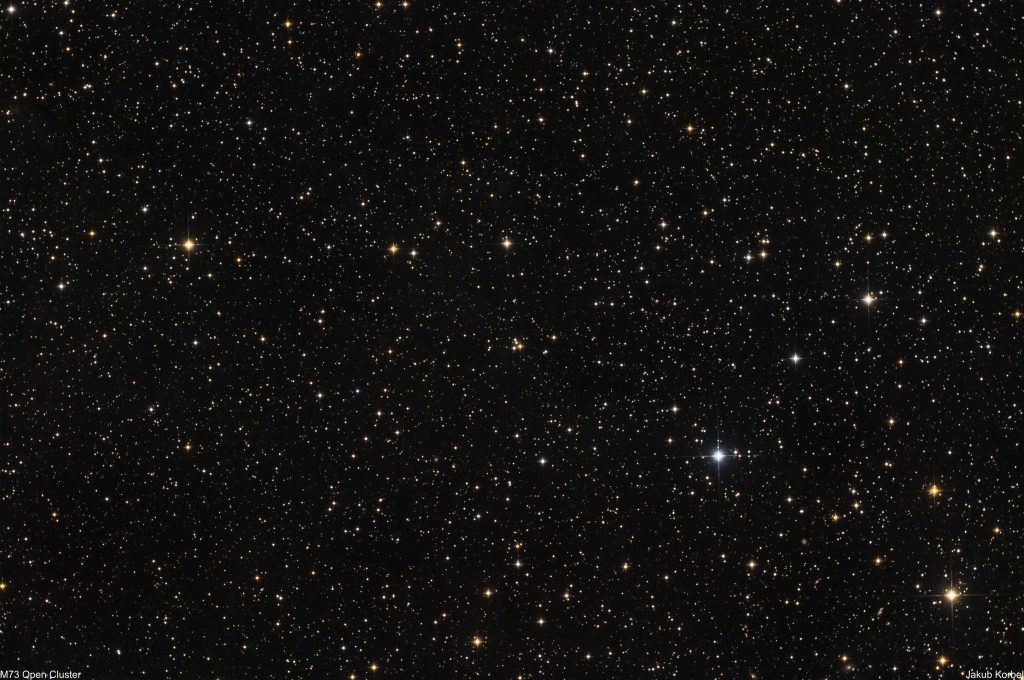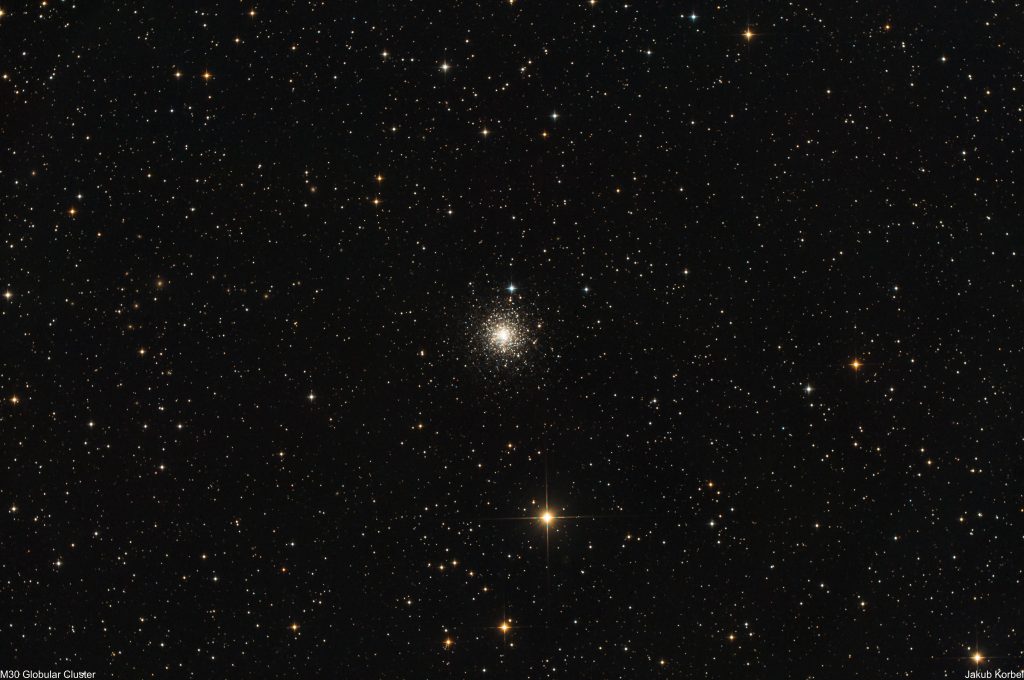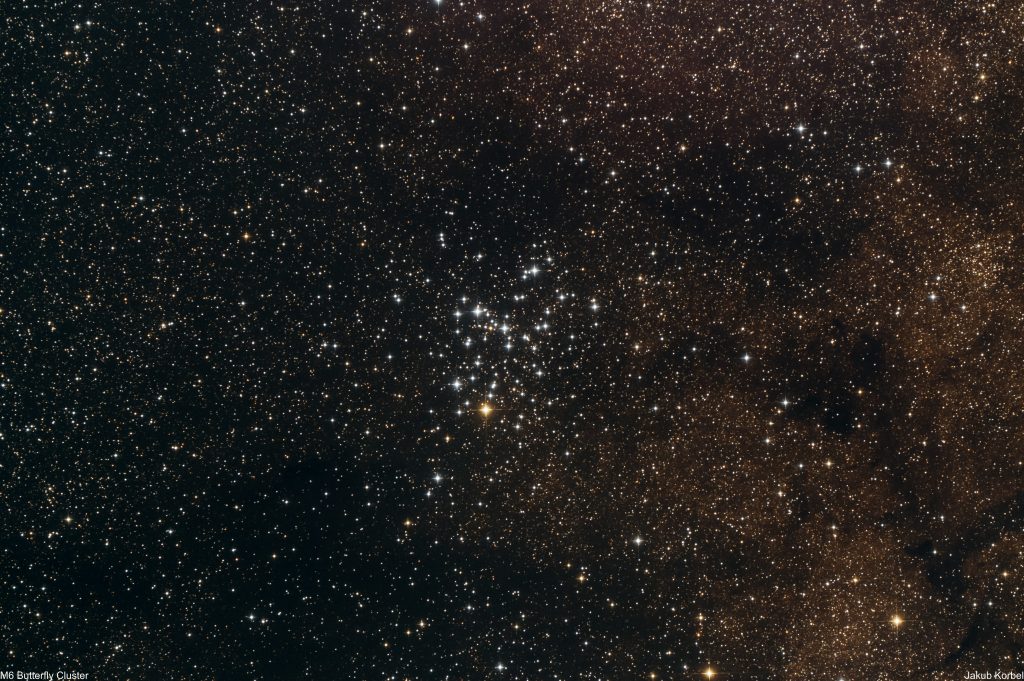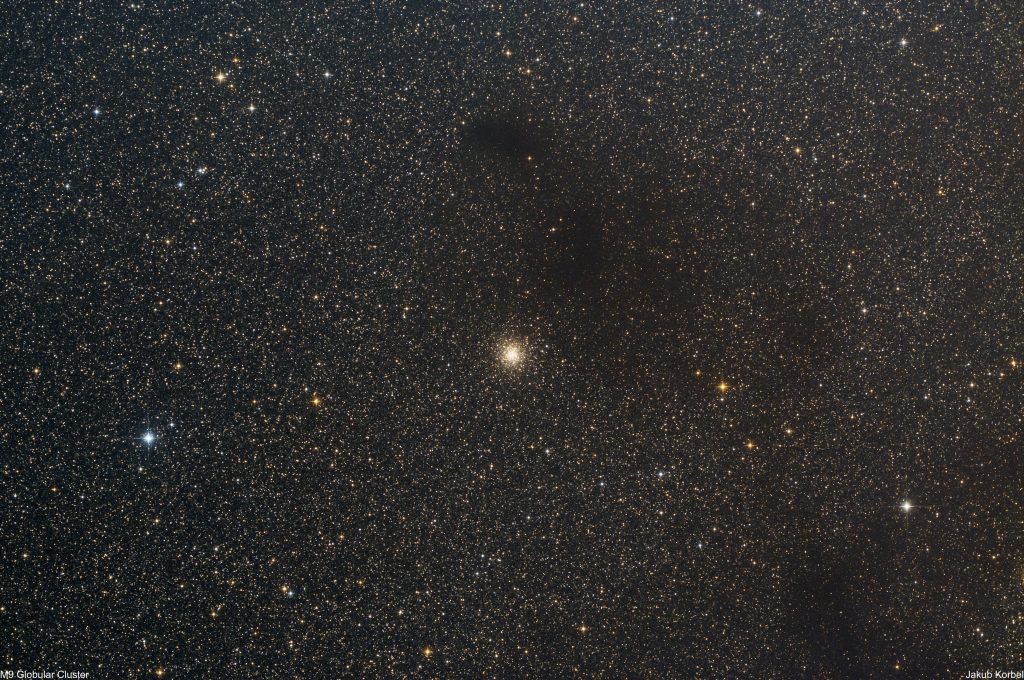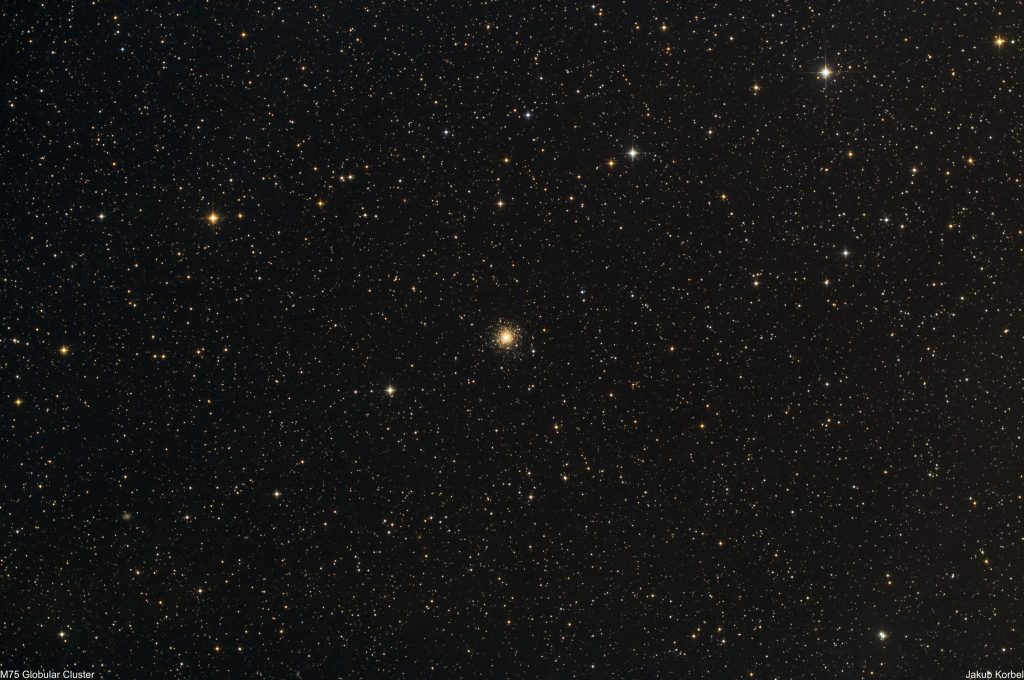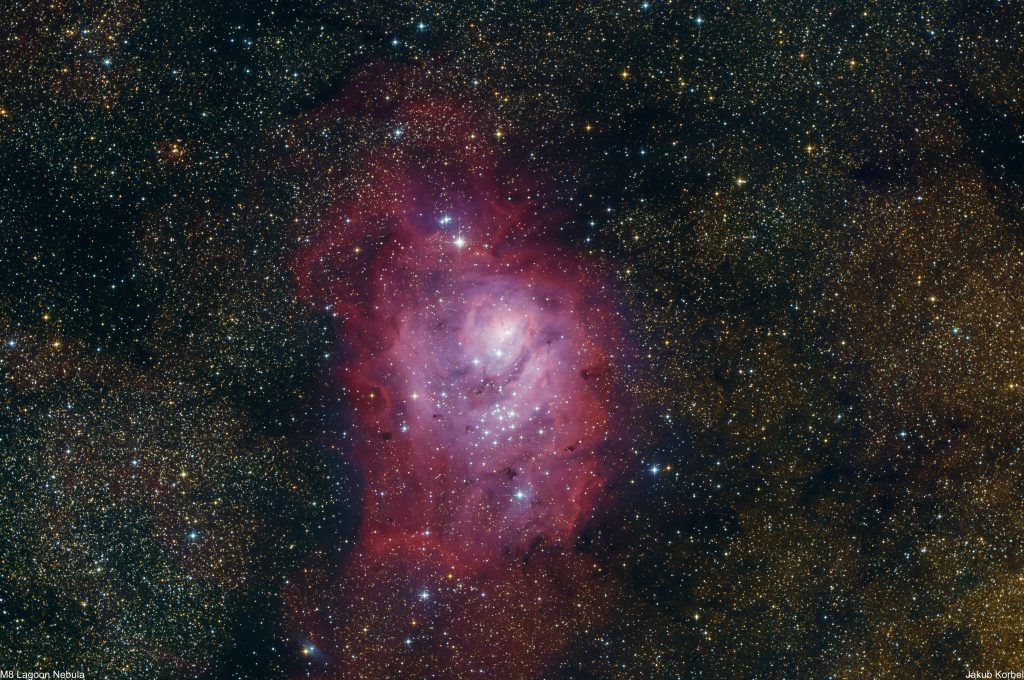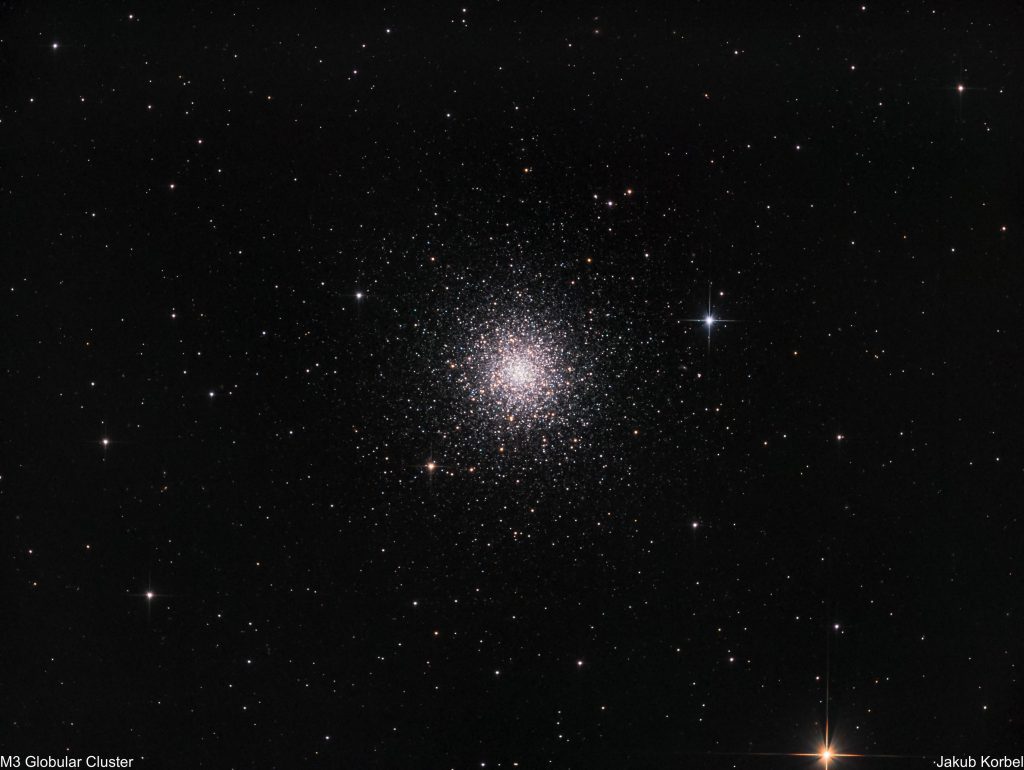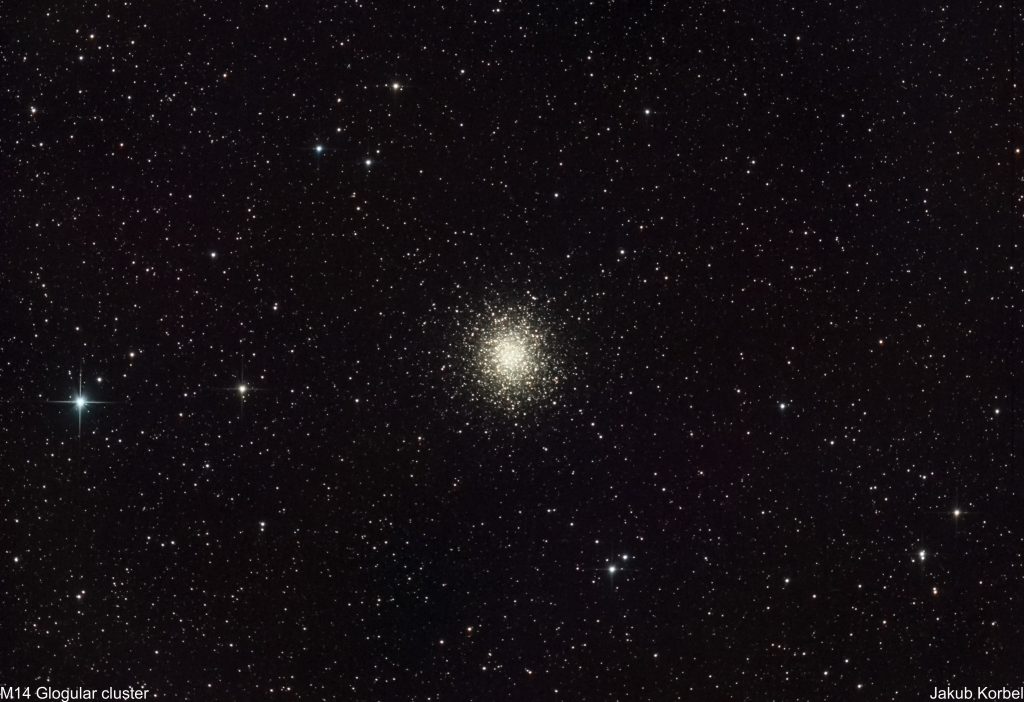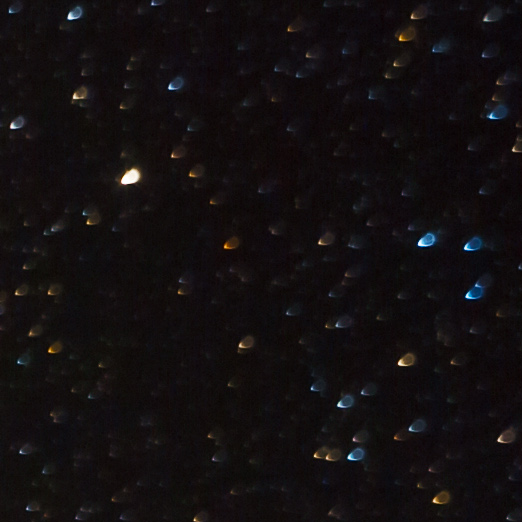Messier73 is a group of stars (asterism), which are visually close to each other if viewed from Earth. M73 was discovered by Charles Messier on October 4 1780 and catalogued as an open cluster with some nebulosity. Latest investigation revealed that M73 is not a cluster, but just an asterism.
Technical details:
| Telescope | Newton 150/600 mm |
| Aperture | 150 mm |
| Focal length | 660 mm |
| Mount | iOptron CEM25P |
| Autoguiding | QHYCCD miniGuideScope 130 mm f/4.3, ZWO 174 MM |
| Camera | ZWO 071 Pro @-10C |
| Corrector | Explore Scientific HR coma corrector |
| Filters | Astronomik L-1 - UV IR Block Filter |
| Exposure | 75x180s, Gain 134, bin 1x1, |
| Date | 2018-09-04 |

